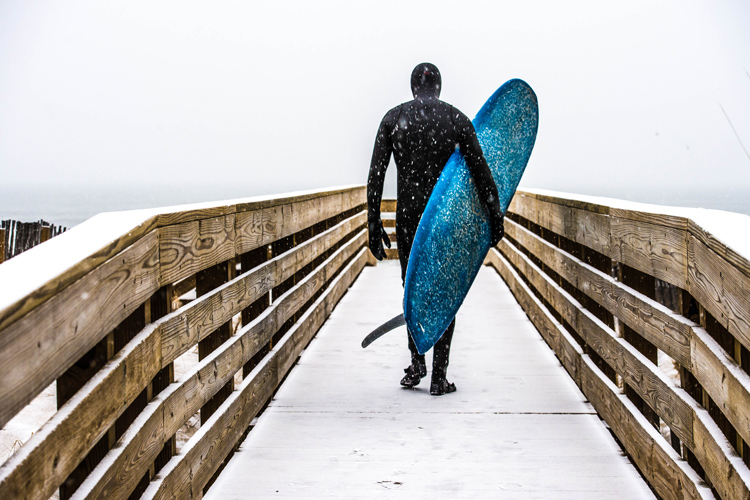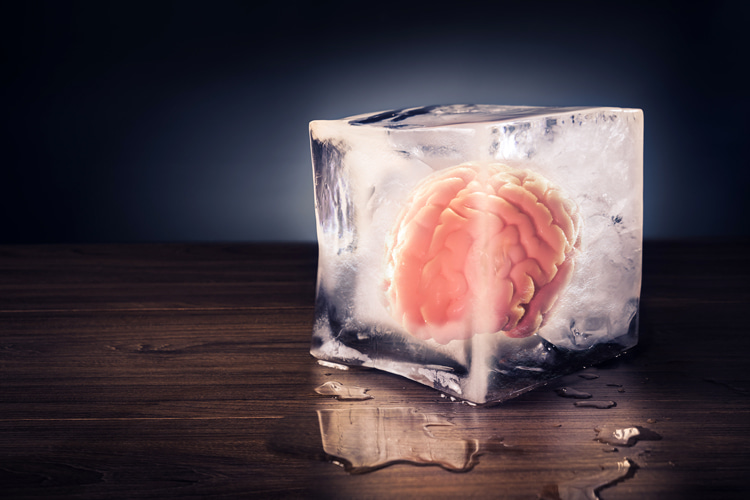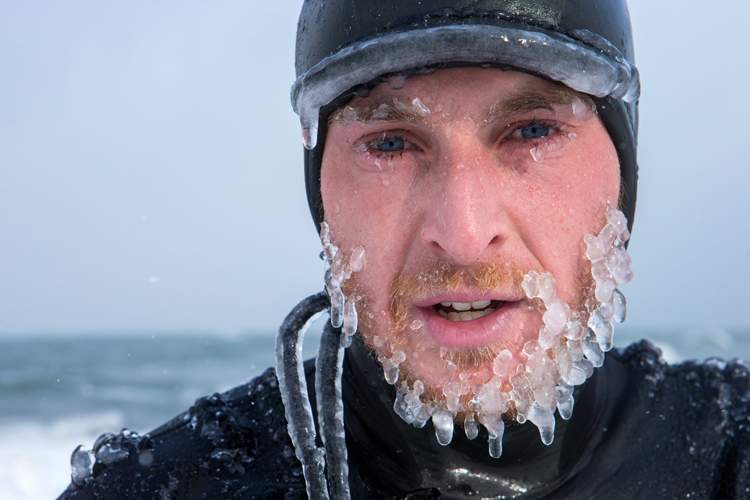The phenomenon is known as a cold-stimulus headache but is also commonly referred to as brain freeze.
The cold stimulus headache can be triggered when something cold stimulates any area of our head. It could be water, wind, but also drink or even food.
Although it is more common when our body is exposed to cold water and wind, it can also occur when we drink cold water or eat ice cream quickly.
Sphenopalatine ganglioneuralgia, the scientific name for cold-induced headaches, is more frequent in migraine sufferers.
Still, it is also a reality for cold water surfers, divers, and open ocean swimmers in hypothermic conditions.
Despite being relatively short-lived - no more than five minutes - they can cause discomfort.

Causes and Symptoms
The human skin is equipped with a high density of cold receptors.
When cold water comes in contact with the top of our skull, it will cause the superficial blood vessels to constrict and swell.
The trigger reaction takes place where two of the brain's most important blood suppliers meet.
They are the internal carotid artery, which feeds blood to the whole brain, and the anterior cerebral artery, which runs up along the front of the brain and sits right on the brain tissue.
When the junction of these arteries gets too cold, they start to contract rapidly.
As a result, the brain sends extra blood to try to warm them up again, making the blood vessels expand quickly.
All this expanding and contracting triggers pain receptors in the outer covering of the brain - called the meninges - where those arteries meet.
But even though the pain is triggered around the base of your brain, the signal has to travel through the trigeminal nerve - the largest nerve in the head - which is responsible for all of the sensations in our face.
The result is that the pain is felt somewhere else, usually on the top of the head, on the forehead, or even behind the eyes.
Some might even experience dizziness and loss of balance.
If in contact with cold water for a long time, headaches may appear.
The same applies to the roof of the mouth when we eat ice cream or drink very cold water.
The good news is that, despite the inconvenient headaches, this natural reaction also comes with an upside.
As a low-temperature stimulus hits our head, it sends a large number of electrical impulses from peripheral nerve endings to the brain, increasing the good feeling and working as a natural anti-depressant.

What To Do
Surfers who perform duck dives immediately after entering low-temperature ocean water might experience dizziness and loss of balance.
A cold stimulus headache is never welcome in rough surfing conditions, especially when wave riders must submerge to get past the breaking waves.
Doctors and scientists say there isn't much we can do to avoid brain freeze, but covering our head with a scarf, hat, or neoprene hood can help.
You can also try to rub your head or forehead and turn your face to the sun to help raise the temperature of your skin.
If you're eating tasty ice cream, try to enjoy it slowly by drinking warm water or sticking your tongue up against the roof of your mouth to reduce the risk of headaches or migraines.
Words by Luís MP | Founder of SurferToday.com
